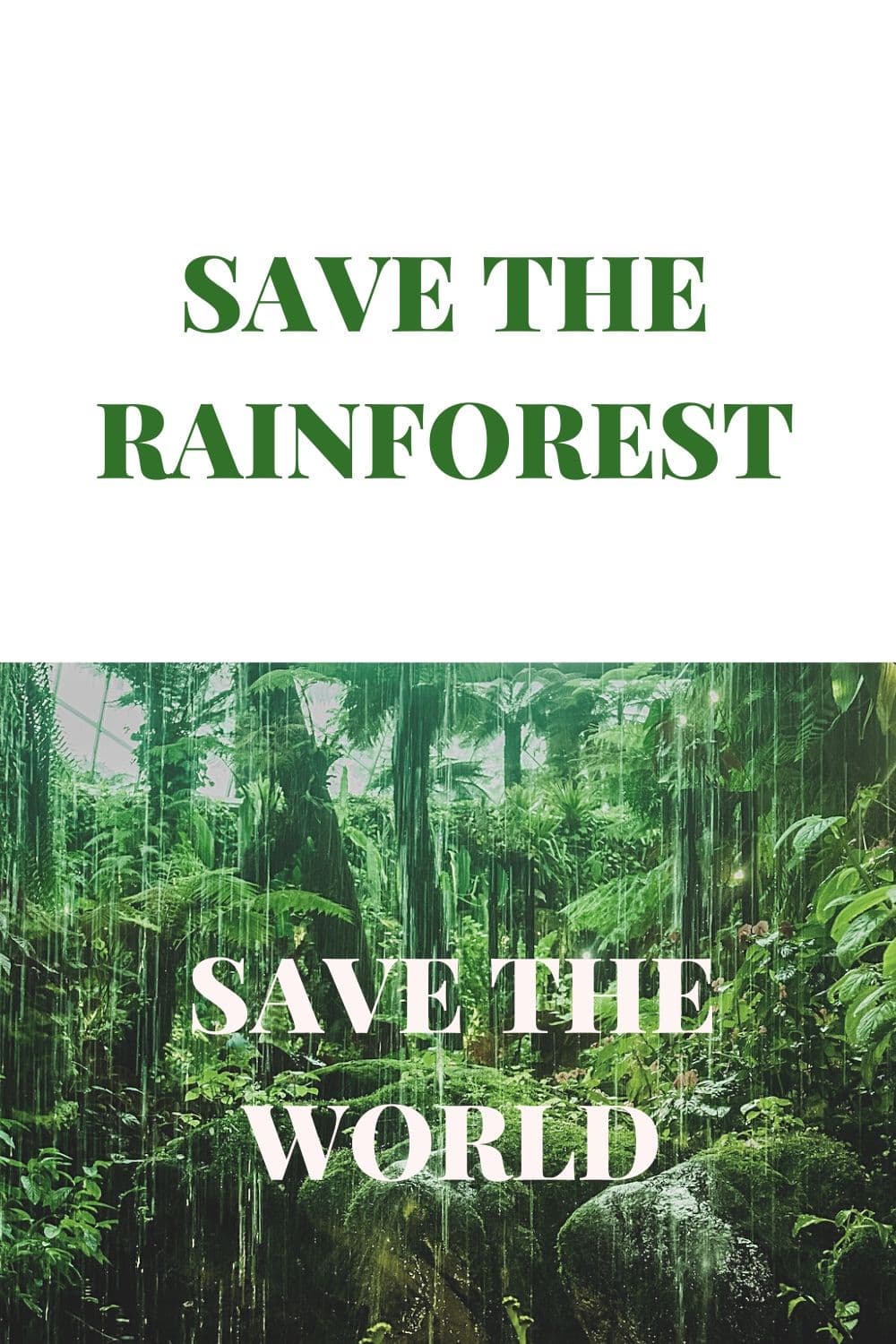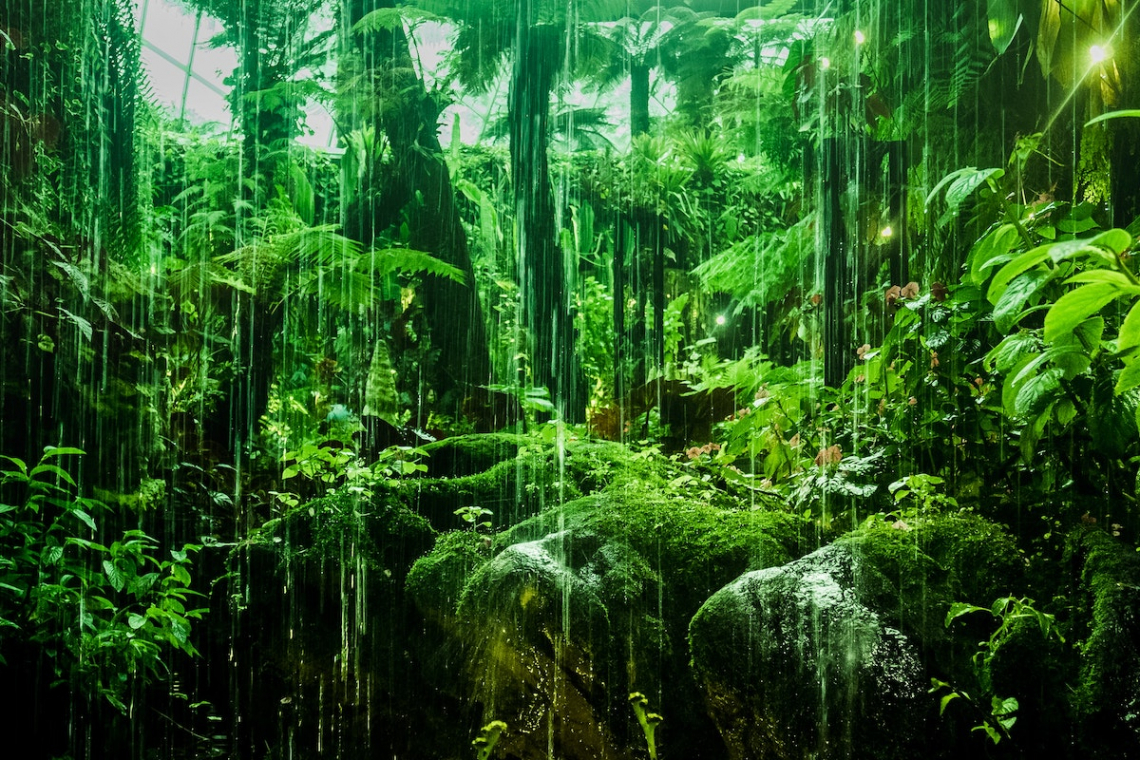The tropical rainforest is said to be one of the richest and oldest living ecosystems on Earth. They make up approximately 6% of the world's surface area but provide habitat to about 50% of the world's species.
Rainforest Facts
Rainforests are jungles which get very high amounts of rainfall per year, typically 80-400 inches annually. Consequently, this is more than any other place on Earth. Perhaps one of the most significant aspects of rainforests are that they are amongst the most biodiverse biomes among all land biomes.
Also read: We tracked 300,000 trees only to find that rainforests are losing their power to help humanity,
Pico da Neblina: Trekking Brazil's Sacred Amazonian Peak with the Yanomami
Biomes are defined as "the world's major communities, classified according to the predominant vegetation and characterised by adaptations of organisms to that particular environment". The climate and geography of a region determine what type of biome can exist in that region. Each biome is unique in its unique weather and temperature patterns, and plant and animal species.
Video: Rainforests 101
Types of Rainforests
There are two types of rainforests: Temperate and tropical. Tropical rainforests are located quite close to the equator, which is why the climate remains quite consistent all year round. The tropical rainforest has a warm, wet climate due to its proximity to the equator. Tropical rainforest biomes are found in Australia, the Southeast of Asia, the Southern portion of India, and South America.
Temperate rainforests are located near the cooler coastal areas further north or south of the equator. They are not as hot as the tropical rainforests because they are farther away from the equator. The largest temperate rainforests are found on the Pacific coast of North America. They stretch from Oregon to Alaska for 1,200 miles. Smaller temperate rainforests can be found on the southeast coast of Chile in South America.
The Amazon is the world’s largest rainforest, home to about 30 million people. One in ten known species on Earth also calls this rainforest their home.
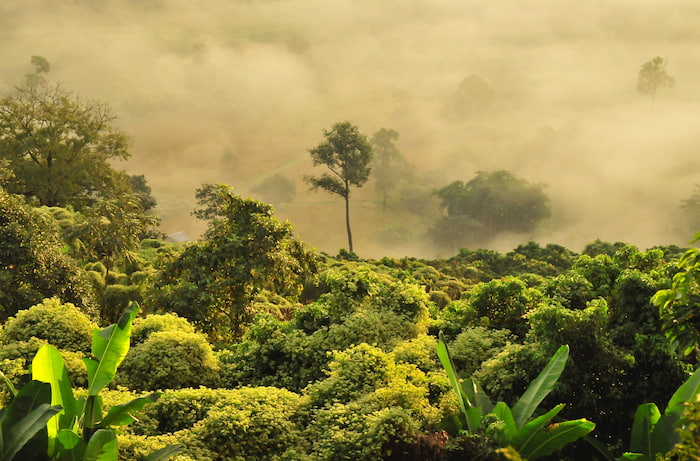
Morning fog rises of forest in Thailand
Why are Rainforests Important?
Expand your understanding. Discover Tropical Forest Landscapes 101: Conservation & Restoration and learn more with Yale University
The Biodiversity of Rainforests
Rainforests contain a large percentage of the world’s species. This is primarily due to their biodiversity. In fact, they contain over 170,000 species of plants, and scientists predict over 10 million species of animals, many of which have not been discovered yet. Among these are a variety of monkeys, bears, wildcats, and frogs, such as the red-eyed tree frog and a masive amount of insects. Many of these are endemic to their areas.
Endemic plants and animals are those who cannot survive in any other habitat other than their original habitat or biodiversity hotspot. That is why conserving and preserving rainforests is so important; otherwise, their unique biodiversity could also be lost.
It is essential to highlight how much humans rely on rainforests. Rainforests are homes and sources of income for many indigenous communities residing there. Rainforests produce roughly 1⁄4th of all the medicines humans rely on. 70% of the plants used in cancer treatments are predominantly found in rainforests. Rainforests are the primary source of everyday items used in our homes daily. Some examples are chocolate, rubber, medicines, and sugar.
Rainforest Plants
The Amazon is classified as a tropical rainforest with the highest biodiversity of plant species on earth. 438,000 plant species have been catalogued so far, with many more still to be discovered or compiled. It is estimated that there are a total number of 16,000 plant species within the Amazon. Today, however, Industrialization and especially industrial agriculture and forest fires threaten the biodiversity of the Amazon rainforest. This would have negative impacts on us as humans as well as the environment.
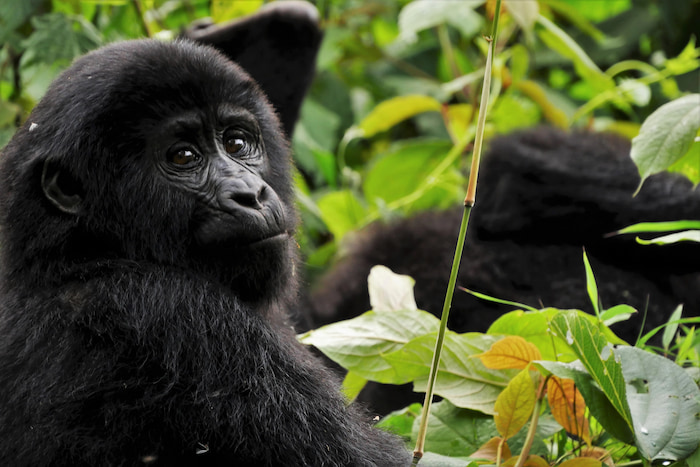
Gorilla sitting in the rainforest of Uganda
Rainforest Animals
The warm and moist environment of the rainforests makes it ideal as a biodiversity hotspot for animals. Reptiles, amphibians, sloths, cougars, jaguars, lemurs, and agouti are only some of the animals residing there. There is an unusually high percentage of animal species that can be found in the trees of a rainforest. Most of it is focused within the canopy, which creates a layer above the forest floor via the intersecting branches and leaves of the trees. Since the atmosphere of a canopy is very different from the floor of a forest, it provides more ecological niches and habitats for a variety of species. Many animals usually found on the ground of a forest might end up as tree-dwellers within a rainforest. Salamanders and anteaters are often found in the canopy of a rainforest.
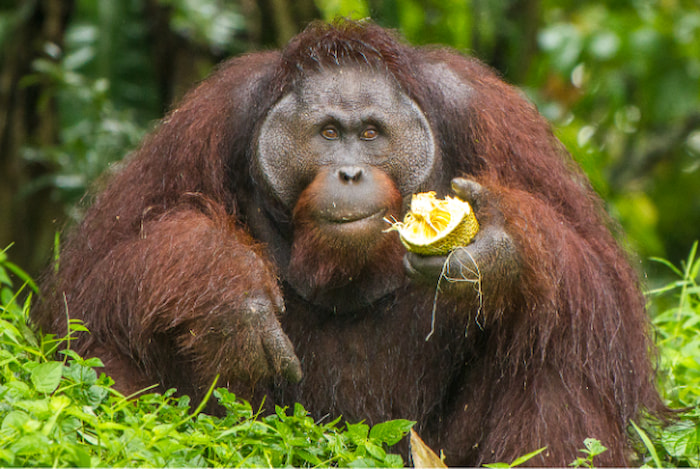
Orangutan Nigel - Orangutan Project
10 Well-Known Rainforest Animals Facing Threats
Sadly, many of these iconic animals are threatened and require tropical rainforest conservation efforts to preserve them for future generations.
- Jaguars: These apex predators of the Amazon rainforest are threatened by habitat loss due to deforestation for agriculture and cattle ranching. Additionally, jaguar hunting for their fur and body parts further fuels their decline.
A Piece On Jaguars: Jaguar Encounters in the Pantanal: Where to Go & How to View Ethically - Orangutans: Found in the rainforests of Borneo and Sumatra, orangutans are critically endangered due to habitat loss from deforestation for palm oil plantations and timber extraction. Illegal hunting and the pet trade also pose significant threats.
Learn More About Orangutans: Saving the Forest with Love: Conversation with Leif Cocks from the Orangutan Project - Sumatran Rhinos: Once widespread across Southeast Asia, these rhinos are now critically endangered, with less than 80 individuals remaining in the wild. Habitat loss and poaching for their horns, used in traditional medicine, are the primary threats.
- Mountain Gorillas: These gentle giants found in the Virunga Mountains of Central Africa are critically endangered due to habitat loss from deforestation and civil unrest. Additionally, diseases transmitted by humans further threaten their survival.
- Vaquita: This critically endangered porpoise found in the Gulf of California faces imminent extinction due to entanglement in fishing gear. Illegal fishing for totoaba, a bladder fish with a high price tag in China, has been the primary driver of their decline.
- Golden Lion Tamarins: This charismatic monkey endemic to the Atlantic Forest of Brazil is classified as endangered due to habitat loss from deforestation and fragmentation. The illegal pet trade also poses a threat to their dwindling population.
- Giant Otters: These playful and social creatures found in the rainforests of South America are classified as near threatened due to habitat loss from pollution, deforestation, and hunting. Additionally, oil spills and mercury contamination further endanger their populations.
- Red Pandas: These adorable bamboo-eating mammals found in the Eastern Himalayas are classified as vulnerable due to habitat loss from deforestation for agriculture and infrastructure development. Poaching for their fur also poses a threat.
- Lowland Tapirs: These herbivores found in the Amazon rainforest and other South American rainforests are classified as vulnerable due to habitat loss from deforestation for agriculture and cattle ranching. Additionally, hunting for their meat and leather further threatens their populations.
- Blue Morpho Butterflies: These stunning creatures found in the rainforests of Central and South America are classified as near threatened due to habitat loss from deforestation for agriculture and illegal collection for the trade in butterfly wings.
Rainforests as Carbon Sinks, Absorbing Carbon Dioxide from the Atmosphere.
The moisture and warm weather make rainforests very lush and full of vegetation. Trees in this region are over 300 feet tall. It is this lush and green vegetation which is said to be able to stabilise our global temperatures due to the rainforest's ability to absorb solar radiation from the sun. These rainforests also act as carbon sinks and are capable of absorbing massive amounts of carbon dioxide, which is a greenhouse gas responsible for the greenhouse effect. Rainforests are extremely important for the health of the planet. Anthropogenic activities emit more and more CO2, which is responsible for accelerating the greenhouse effect and leading to global warming and climate change. Rainforests can absorb most of this carbon dioxide which is then converted to oxygen via photosynthesis, producing about 40% of the oxygen of the entire globe.
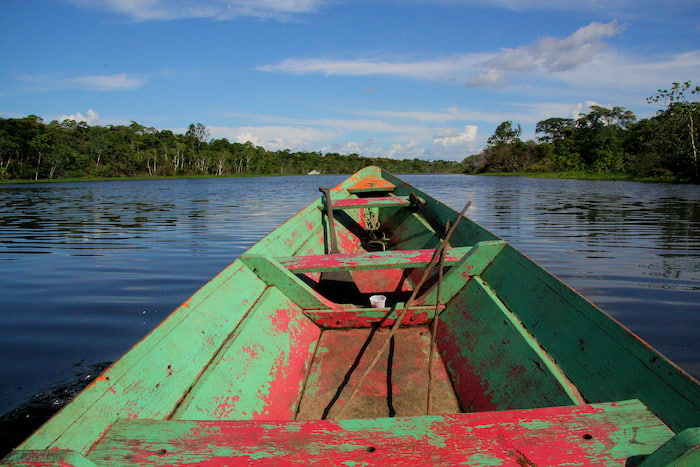
An old wooden row boat on the Amazon River looks very natural and at home but note the discarded plastic mug, even here.
Human Impact on Tropical Rainforests
What Impact Does Human Activity Have?
Unfortunately, these rainforests are at risk due to human development, deforestation and exploitation of their natural resources. For example, the Amazon rainforest is one of the most significant biodiversity hotspots. Biodiversity hotspots are those biogeographic zones that contain high levels of species diversity but are threatened with extinction. It is both a significant reservoir of biodiversity and is threatened with destruction. Already the Amazon rainforest has lost 70% of its original habitat.
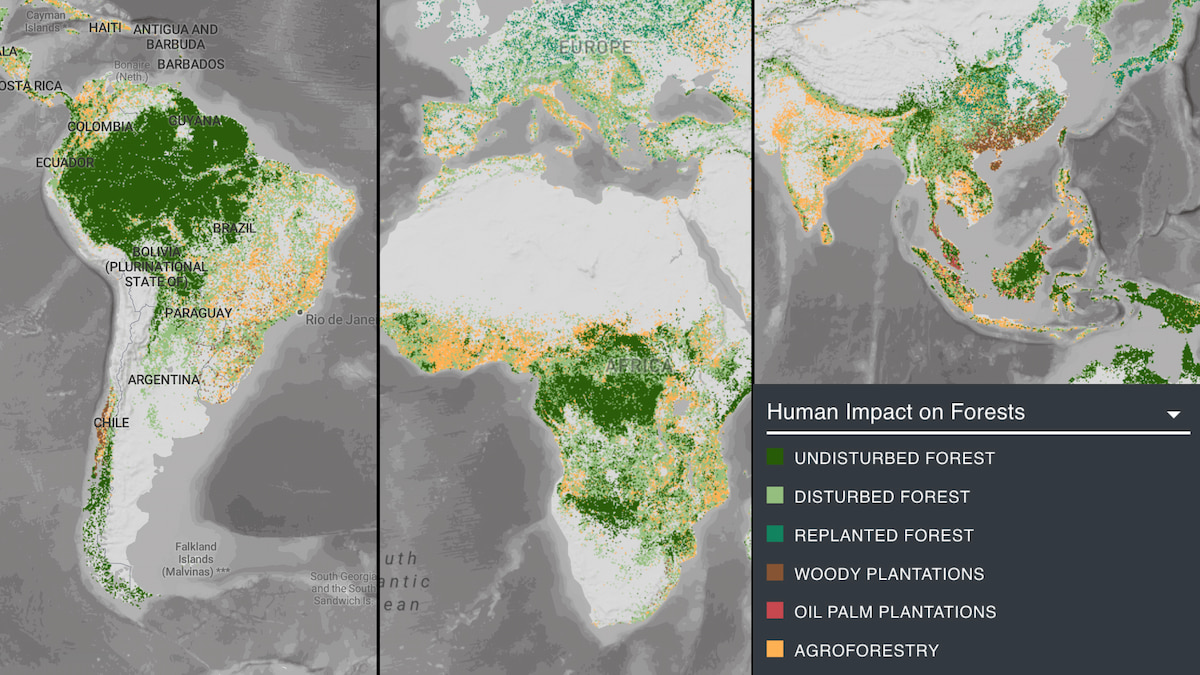
Map of Human Impact on Tropical Rainforests - Adapted: UN Biodiversity Lab
Examples of Human Impact Through Deforestation and Other factors
Rainforests originally covered 14% of the world, but due to our greed, now rainforests only cover about 6% of the land. Humans pose the greatest threat to rainforests because of our drive for financial and economic gain. Here are the major threats humans pose to rainforests:
- Logging has increased due to an increased demand for rainforest hardwood timber.
- Mining to extract minerals affects large areas of rainforests as it is common knowledge that some rainforests are situated on top of valuable minerals.
- Oil Exploration as Palm Oil grown in tropical rainforests can be used for oil, food, cosmetics and most importantly, biodiesel. Biodiesel and biofuel have become a priority recently as people now want to move away from their dependency on oil and gas.
- Expansion of soy, cattle and other commodities is being enacted through activities that cause deforestation and the loss of native forests.
- Deforestation and forest degradation are caused by the need for human settlements.
- Development of Infrastructure and roads that end up penetrating rainforests.
- Hydroelectric Power development via dam building is causing deforestation as the rainforests also have substantial rivers which can be utilised. However, for development, the rainforest area needs to be cleared. This is also causing the area the dam is built on to flood the rainforest via the reservoir.
- Climate Change due to global warming affects atmospheric systems and could potentially disrupt the natural systems of our rainforests which could lead to catastrophic events.
A recent article published in 2022 talks about how the amazing is losing resilience. The Amazon is a significant carbon sink, but during the droughts of 2005 and 2010, the Amazon turned into a carbon source. If the Amazon continues to deteriorate it could have significant consequences that our society as a whole might not be able to survive.
Degradation of these rainforests causes ecosystem stress. Ecosystem stress is where the productivity and processes in an ecosystem become challenging to occur due to some form of natural or human pressure.
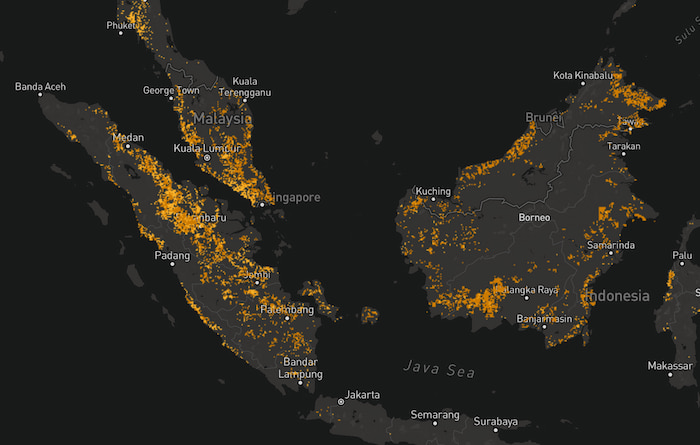
Map of Palm Oil Plantations SouthEast Asia - BIOPAMA
Ecosystem Stress on Tropical Rainforests
Ecosystem stress on rainforests due to human impact could mean the following:
Rainforests categorised as tropical might shift due to changes in atmospheric systems and become more like seasonal tropical forests with a consistent dry season each year. This could cause problems for the species endemic to the area that cannot adapt to a change in climate or dry climates.
Heatwaves would occur in places where they do not usually occur. This would cause problems for species that are unable to adapt. One such example is when colonies of flying fox bats died when heat levels rose above their tolerable limits.
Drying out the leaf litter in moist tropical rainforest climates could potentially cause a food shortage for decomposers. It would cause decreased soil fertility and loss of crucial nutrient cycles.
Leaves in the canopy that often receive rainfall could die due to changing conditions which would end up reducing the food supply, disturbing food webs, and disrupting the evapotranspiration cycle.
With fewer trees as a whole, there ends up being less evaporation and transpiration, meaning fewer clouds, less rain, and dry conditions. This is called a negative multiplier effect. It ends up creating a cycle where dry places become even dryer.
The above scenarios can cause entire systems to transform for the worst. Our rainforests are our reservoirs of biodiversity and carbon storage. Their degradation could result in the tipping point where there is no turning back from preventing exponential global warming and climate change.
What Can We Do to Conserve the Rainforest?
Conserving Rainforests for Indigenous Communities and Beyond
Tropical rainforests are not only ecological wonders; they are also home to diverse indigenous communities who have thrived in harmony with these ecosystems for millennia. The preservation of rainforests is crucial for protecting the cultural heritage and traditional way of life of these communities. When we conserve rainforests, we are not just protecting endangered species and irreplaceable ecosystems; we are also safeguarding the livelihoods and cultural identities of the people who call these rainforests home. Investing in rainforest conservation is an investment in the well-being of both people and the planet.

Mahouts washing down their elephants in a sanctuary - Northern Chiangmai - Dhruva Reddy
Preserving Rainforests for a Healthier Planet
Rainforests are not just lush green havens for exotic wildlife; they are the lungs of our planet. They play a critical role in regulating the Earth's climate by absorbing massive amounts of carbon dioxide, a potent greenhouse gas responsible for global warming. Protecting tropical rainforests, therefore, is not just about safeguarding biodiversity; it's about preserving the very health of our planet. By preventing deforestation and promoting sustainable practices within rainforest communities, we can combat climate change and ensure a cleaner, healthier future for generations to come.
Together We Can Save the Rainforests
It is essential to teach others the importance of rainforests to increase awareness and conservation efforts. People should be taught and encouraged to live in a way that does not harm the environment or require overexploitation of the natural resources of the rainforest. There are also options, such as protecting a rainforest by donating to conservation sites like the Rainforest Action Network. To protect one acre, they suggest a 25$ donation. Furthermore, you can help buy land via The Rainforest Trust. They purchase sections of rainforest land all over the world to conserve it and protect it from habitat destruction.
We must all work together to preserve the environmental services provided by rainforests around the globe. If we do not, the habitats could degrade, and these rainforests could potentially become the exact opposite of what they are now – from lush, green carbon sinks, they could become dry savannahs which emit carbon. We rely on their vegetation quite heavily for oxygen and a plethora of other services. By adopting sustainable lifestyles and advocating for the conservation of rainforests, we can be potential catalysts for change to prevent further habitat destruction of rainforests.
Main Photo by Raphaël Menesclou, Singapore
Shop for a cause
Shop on amazon.com | amazon.co.uk
